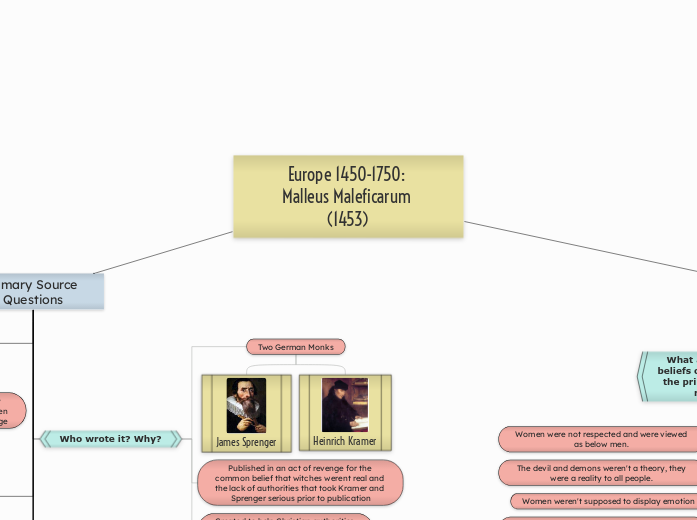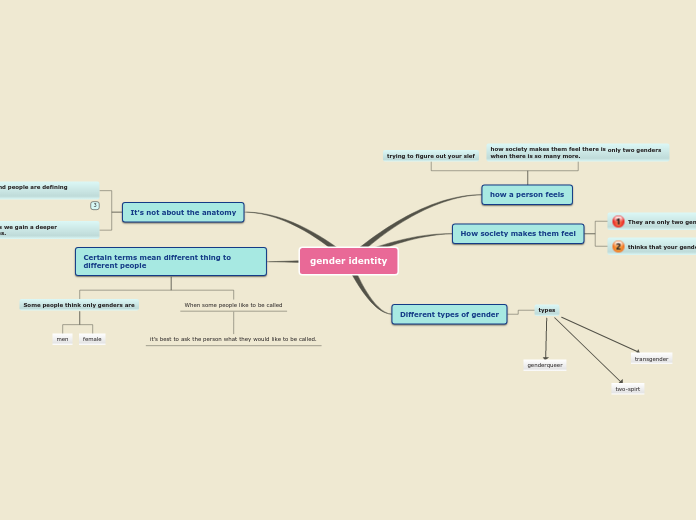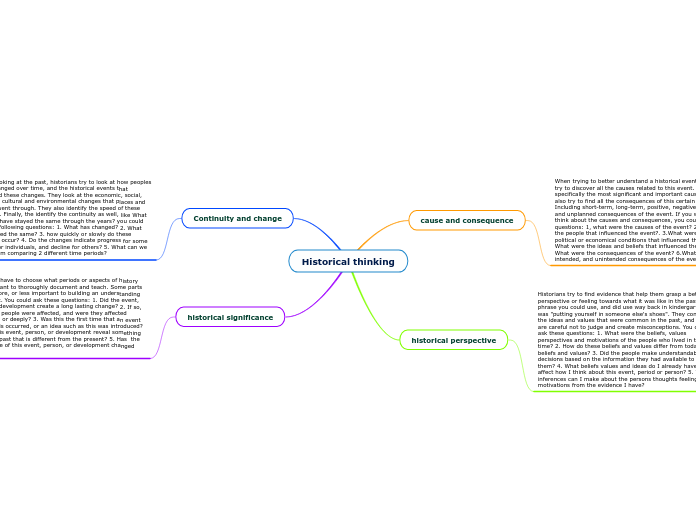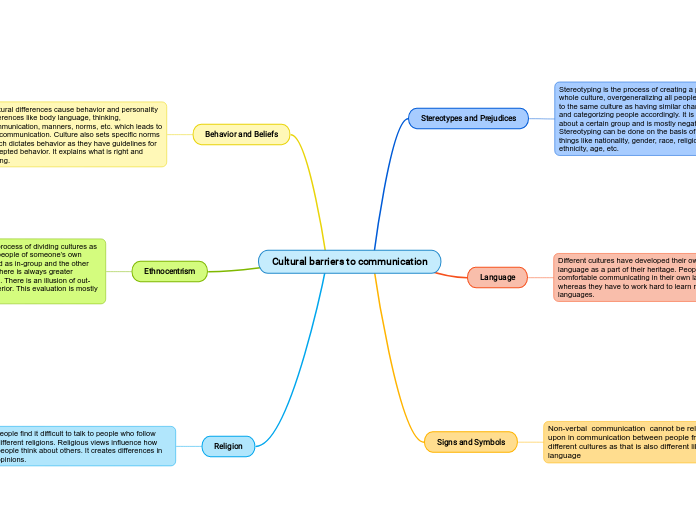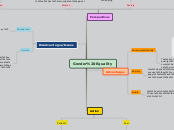Europe 1450-1750:
Malleus Maleficarum (1453)
Significance
Questions
What change did the
primary source cause?
The pope authorized executions of witches.
Led to a major rise in the
punishments being administered
to the "witches"
Increased the belief that witches are real, leading to the recognition of witch craft from King James I in 1603
It became so famous it was
reprinted 13 times in forty years.
What attitudes or
beliefs of this era did
the primary source
reveal?
The church had a hand in laws that were passed
Women weren't supposed to display emotion
The devil and demons weren't a theory, they were a reality to all people.
Women were not respected and were viewed as below men.
Primary Source
Questions
What ideas are left out?
Add your text
What are the big ideas?
Women of a lower status are evil and likely withces.
Witches are the enemy and need to be eliminated.
There are different types of
witches that require
different approaches.
Witches and witchcraft are
sinful and forbidden
Death and torture are the means of punishing and torturing any witches.
Outlines the process to become a witch, the signs of witchcraft, and the most effective methods of rooting out community witches.
How does the author
communicate ideas?
Step by Step guide
Includes a table of contents
In the form of an
educational book that is
to be followed exactly.
What does it look like?
Includes complex drawings of
examples of witchcraft
Written in Latin and
most commonly translates
to The Hammer of Witches
Yellowed paper with relatively
large print that let to only a dozen
(more or less) sentences per page
Separated by its numerous
sections and chapters
Is in the form of
a chapter book
Which questions can this source help me answer? Which can it not?
Cannot answer
Are Sprenger and Kramer important or significant aside from the Malleus Maleficarum?
Why was the law so different
from how it is now? What
caused the change?
Can Answer
Provides context on the ways
in which gender inequalities
impacted women during the time period.
Whose perspectives are omitted/questioned/challenged?
People who are
non religious.
A feminist perspective
Anyone who qualified as a
witch under Kramer and
Sprenger's standard.
The Christians of the period
who did not believe in the
existence of witches.
Whose perspective does it reflect?
Powerful but misogynistic men
that believe women are destined
to be evil and sin.
One that is religious and is
heavily against any form of
witchcraft.
Who wrote it? Why?
Created to help Christian authorities
identify and then punish or persecute
witches within the community.
Published in an act of revenge for the common belief that witches werent real and the lack of authorities that took Kramer and Sprenger serious prior to publication
Two German Monks
Heinrich Kramer
James Sprenger
